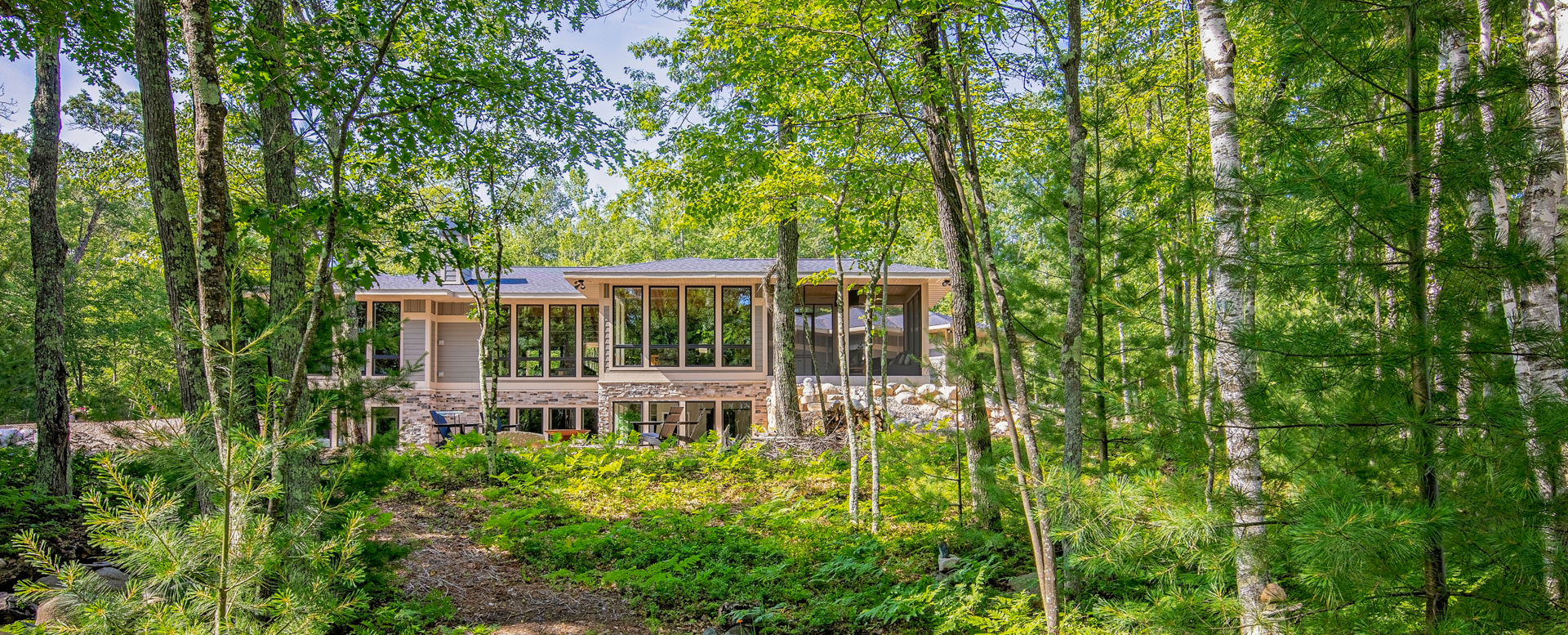
Wisconsin Log Homes takes proper forest management very seriously. The log and timber suppliers we partner with follow conscientious harvesting and reforesting practices, ensuring a continuous supply of quality trees. Innovative, ecologically sound silviculture programs have been implemented to replant and maintain harvested areas, planting about three trees for every one harvested. The latest technologies in road building and harvesting are used to ensure that the environment is impacted minimally.
In addition, our Sawmill team members responsibly collect and repurpose all sawdust and scrap wood. Our sawdust goes to local farms and our scrap wood is made into clean landscape chips that fill our local parks, school playgrounds and recreational centers. You can be sure that by building a Wisconsin Log Home, you will be respecting and honoring the environment.
How Homes Become Green
• Look to more durable roof coverings such as integrate asphalt shingles, standing-seam metal roofing, slate or concrete tiles and solar roofing products, steel and fiber cement to reduce the frequency of roof replacement.
• Energy-efficient windows incorporating advanced technologies like Insul lowE2 Argon Gas glazing, warm wood interiors and maintenance free exteriors with heavy-duty extruded aluminum cladding to keep heat inside in the winter and outside in the summer.
• Wood is the only building product that is renewable, biodegradable, recyclable, energy-efficient and naturally beautiful. Logs and other basic wood building components generate the least amount of air and water pollution, greenhouse gases and solid waste.
• Increasing the amount and R-value of insulation is a cost-effective way to save energy and help reduce heating and cooling bills, which account for at least half of the energy use in the home. Sprayed insulation made from foam, cellulose or wool and reflective foil are alternative to glass fiber batting.
• Incorporating passive solar design features like large south-facing windows helps heat the home in the winter and allows for more natural daylight.
• Foundation walls should be insulated, as well as the main level walls, for efficient energy use and enhanced comfort, particularly if it is used for living space.
• Factory-built components including trusses and pre-hung doors allow for more efficient use of raw materials, and reduce jobsite waste.
• Recycled plastic lumber and wood composite materials reduce reliance on chemically treated lumber for decks and porches. Stamped and dyed concrete is another alternative to treated lumber.
• Properly sized overhangs and porches over the exterior doors help to prevent water intrusion, reducing maintenance and enhancing durability.
• Oriented strand board (OSB) is an engineered wood product that doesn't demand older-growth forest like plywood. OSB can be created from small-diameter trees.
• In addition to natural wood, flooring choices include low-VOC (volatile organic compounds) carpet for better indoor air quality. Also consider laminates and linoleum.
• Select energy-efficient, properly sized heating and cooling and water heating equipment to save energy.
• The energy efficiency of refrigerators and freezers has tripled over the last three decades because they have more insulation, advanced compressors, better door seals and temperature controls. Front-loading washers use about 40% less water and half the energy of conventional styles.
• New toilets have re-designed bowls and tanks that use less water, but function more efficiently than first-generation low-flow models.
• Advanced shower and sink faucet aerators supply the same flow regardless of pressure to reduce water use and the energy used to heat it.
• Xeriscaping, or using native plants, significantly reduces the need for watering, fertilizers and herbicides.